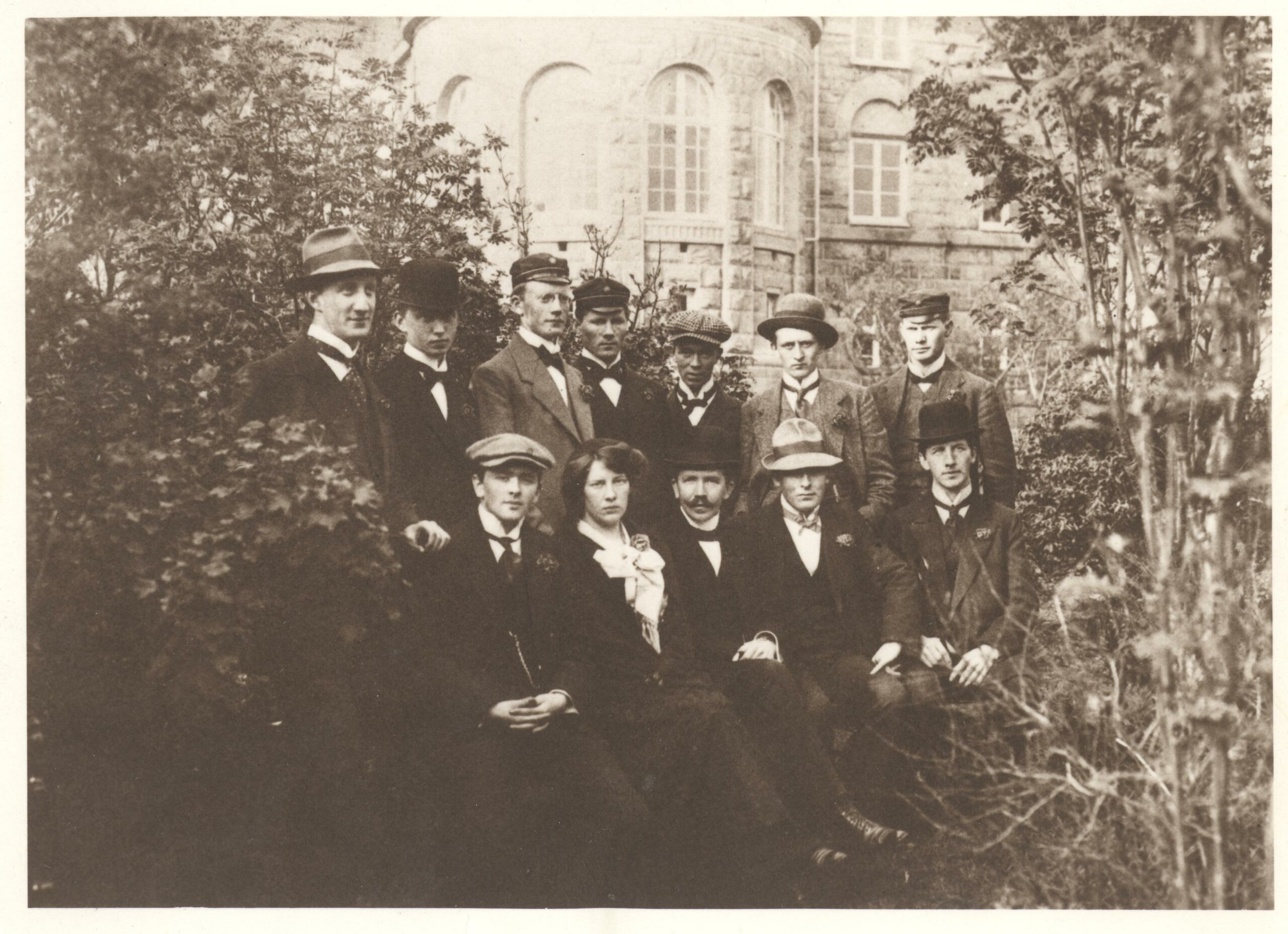The SDGs a century ago?

Few nations have gone from rags to riches as quickly as the Icelanders. The twentieth century was a period rapid progress in Icelandic society. The nation moved out of turf huts into concrete houses. Travel within Iceland was an arduous undertaking, but now people think little of going abroad a few times a year.
Our modern society is in many ways more sustainable than it was 100 years ago. Health is better, equality greater, hunger is no longer a problem, most people enjoy financial stability and the list goes on. Therefore it has’t been necessary to promote values like sufficiency, resourcefulness or restraint for more than half a century. The result is that each Icelander has a huge ecological footprint and creates a lot of trash that cannot be recycled or reused.
Today our consumption is no longer impeded by poverty, but we need to rethink how we consume due to a changing world. Our unbridled consumption has resulted in a warming climate, the acidification of oceans, changing weather patterns and news reports about microplastics being found nearly everywhere, including the placentas of pregnant women.
If we look back at the progress made by Hannes and the home-rule government, it becomes obvious that a lot of their initiatives, programs and laws were imbued with foresight and fit to the goals stipulated in the UN SDGs.

A life-viable land
“The goal that we are fighting for, it is to make the land as viable for life as possible, by nurturing everything that makes life easier here,” said Hannes Hafstein in his inaugural address as the Minister for Iceland. Hannes was not lacking in creative thought, initiative nor talent to boldly foster new ideas and ambitious projects. It is no wonder that emigration to Canada and the US nearly stopped when Hannes took over, whilst at the same time emigration from Europe to the New World increased.
Gender Equality
One of Hannes’ earliest works as minister was to ensure that girls had access to the same education as boys, later he made sure young women had that same rights as men to education, stipends and civil service positions. When Alþingi extended voting rights so that non-landowning males could vote, Hannes made a special note that “in truth, suffrage is not universal until women have the same political rights as men.” It is apparent that gender rights were important to Hannes. Eventually, women 40 years and older received the right to vote in 1915, and then equal political rights in 1920.


Quality Education
Hannes was aware that a crucial part of a viable Icelandic independence was having a well-educated population. He made sure that women had access to education, as well as advocating for the creation of the Teacher’s school in 1907, also in 1907 he made sure that all children had a free 4 year education, in 1909 a fund for basic education teachers was created, and in 1911 Hannes was instrumental in establishing the University of Iceland. During the home-rule period high-schools, agricultural schools, a seafaring school, technical schools, home-making schools and youth organizations were established.
Industry, Innovation and Infrastructure
During the home-rule period infrastructure in Iceland was revolutionized. Roadways in rural Iceland were little more that pathways only suitable for horses and pedestrians. Hannes was considered by some of his peers to be an extravagant spender compared to the previous colonial government, where the role of the Minister for Iceland was mainly to save money and cut corners. Hannes saw to it that carriage-worthy roads were built from Reykjavik to the surrounding areas, major rivers like Sogið, Jökulsá í Axlarfirði and Brúará were bridged. Hannes was very ambitious and had plans to build a railroad to the east from Reykjavík, but alas, those plans were too expensive.


Decent work and economic growth
During the Home Rule period the motorization of the Icelandic fishing fleet began as well as the founding of the first Icelandic shipping company, Eimskip. Hannes Hafstein saw to that public money was used to modernize the harbor in Reykjavík and that Althing would financially back Eimskip and the construction of domestic shipping vessels to facilitate the transport of people and goods around the island. These developments were an important step in the creation of an urban society in Iceland, towards independence and the prosperity that we enjoy today.
Sustainable cities and communities
The first indications of industry started appearing during the Home Rule period. Wool processing plants were established in Mosfellsveit and in Eyjafjörður, as well as a domestic textile mill, the production of fishing equipment, a brewery, margarine production and a soap factory. Also during this time the first hydro-electric dams were constructed with a small plant in Hafnafjörður in 1907 being the first. „The waterfall laws“ from 1907 ensured that only those who have an Icelandic citizenship may own waterfalls and exploit them.


Life on land
An issue very close to Hannes’ heart was the reclamation of vegetated land and forests. In 1907 Hannes introduced legislation about the planting of trees and the prevention of erosion of vegetated land. These laws were the beginning of two institutions which exist today and are still working to re-vegetate Iceland.
This legislation can be seen as a sort of measuring-stick for the future of this land and the capacity of future generations for hard work. We cannot expect that this endeavor will be profitable today or tomorrow. We are carrying the cost for an attempt to make the land better, more habitable and more beautiful for our children and their children. It is based on the hope that the vegetation will not only be sustained, but will increase manifold in the years to come. This is grounded in the faith that that which once was can be again.

